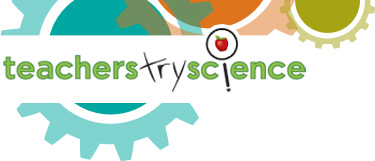Phase 1: Learning the Concepts (at least two 45 minute class periods)
Understanding Global Warming (See Global Warming PowerPoint presentation)
- The students will be asked to write at least three questions about the diagram/pictures shown in the powerpoint.
- The teacher will discuss global warming.
Note: It is suggested that the teacher should find time to let students write something about what they have learned so far.
Optional Activities: This lesson will be enriched by showing one or more of the below video clips about carbon dioxide and asking students to write a summary of the key information presented.
- About the Plains CO2 Reduction Partnership
- CO2 and Climate
- CO2 and the Greenhouse Effect
Phase 2: Modeling, Designing and Using The Temperature Reader (at least two 45 minute class periods)
In this part of the lesson, the students will devise a temperature reader that they will use to show the effect of carbon dioxide emission of household materials on temperature. This activity can be done as either structured or open-ended design. For a more structured lesson, guide the students to make the temperature reader while still giving them room to add some changes of their own. Otherwise, provide students with a variety of materials and set them loose to design their own temperature reader of their own imagination.
Part 1- Designing The Temperature Reader
- Divide the class into teams of two to four students each.
- Have each group decide on the name of their team.
- Instruct the students to brainstorm on how they design their temperature reader.
- Have students draw their design and list the materials they need to construct their temperature reader.
Optional Activities: The teacher can show/model a sample of devising a temperature reader by following the procedure below and viewing the Sample Temperature Reader:
- Obtain a clear plastic cup with a cover. You can recycle a coffee cup with cover or any clear plastic cup with cover/lid. If there is no cover available, you can use cardboard.
- Cut a hole in the center of the lid large enough to fit the thermometer, but small enough to keep the thermometer in place and provide a snug fit. If you accidentally cut the hole too large, start over with a new lid or fill in with clay.
- Cut another small hole in the lid for the straw. The hole should be small enough that the straw fits snugly within it. If the straw will not be of use in the experiment, cover with clay.
- Place the lid over the mouth of the coffee cup. Insert the straw and thermometer into their holes. You can hold the thermometer in place with a ring stand to complete the temperature reader and make it ready to use.
Part 2- Constructing the Temperature Reader
- Provide the materials needed in making the temperature reader as requested by every team.
- Give students time to make their temperature readers.
- Each group should create two temperature readers. One will be a control.
Part 3- Using The Temperature Reader
- Provide teams with the materials to be tested: e.g., tea light candle, sugar, active dry yeast, breathe in a bottle, baking soda and vinegar, can of soda.
- Take the top off the cup of the temperature reader.
-
Place approximately 40 g/ 40 mL of the substance being measured into the coffee cup. Use a balance or any weighing scale to measure the mass of the substance and graduated cylinder to measure the volume of liquid substances.
-
Put the cup back into the temperature reader. Allow the thermometer to sit in the substance for few minutes before reading the temperature.
-
Record the temperature of both the control temperature reader and the reader that has the substance being tested inside of it. Students can record the reading in the table.
-
Clean the cup with water and dry it with paper towel.
-
Do the same procedure for all the substances that can be measured using a balance.
-
For the other substances that mass cannot be measured follow the procedure below:
A. Breathe: Ask one student in a group to breathe as much as he/she can into the cup using the straw from the top cup. Then, close it with clay to trap the breathe inside the cup. Allow the thermometer to set for few minutes before reading the temperature.
B. Tea Light Candle: Slowly place the tea candle inside the cup and lite it. Place the cover gently and make sure that the thermometer is placed beside the candle, but not directly on the light. Allow the thermometer to set for few minutes before reading the temperature. (Note: Make sure that the cup will not melt/burn. The time should just be enough to measure the temperature.)
-
Record the temperature reading for all of the substances in the table. Be sure to record the control as well.
Phase 3- Reflection, Feedback and Revision (at least 1 class period)
- Have students and their peers grade/evaluate their devised temperature reader and laboratory outputs using the rubrics given.
- Instruct them to make the necessary revisions in their temperature reader based on the feedbacks given by peers and teachers.
- Help students make connections between the carbon dioxide trapping heat in the cup and the greenhouse effect.



Comments
rubgit
Permalink
April 27, 2011 - 8:14pm
Wing let me know if this